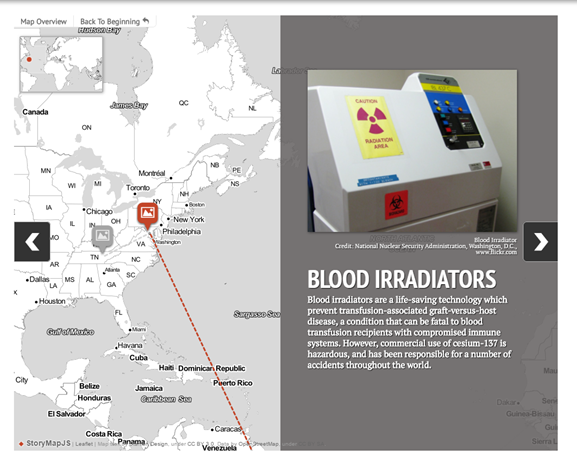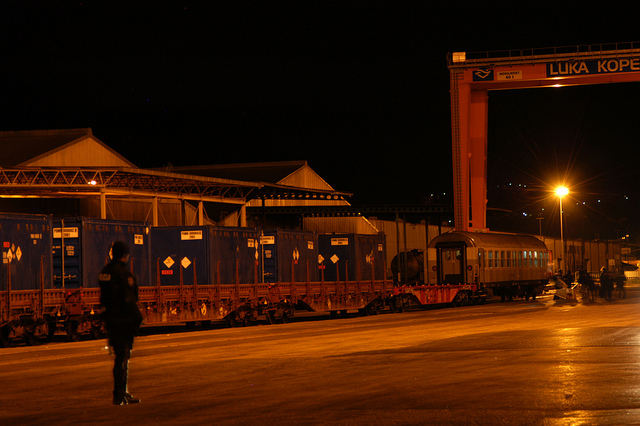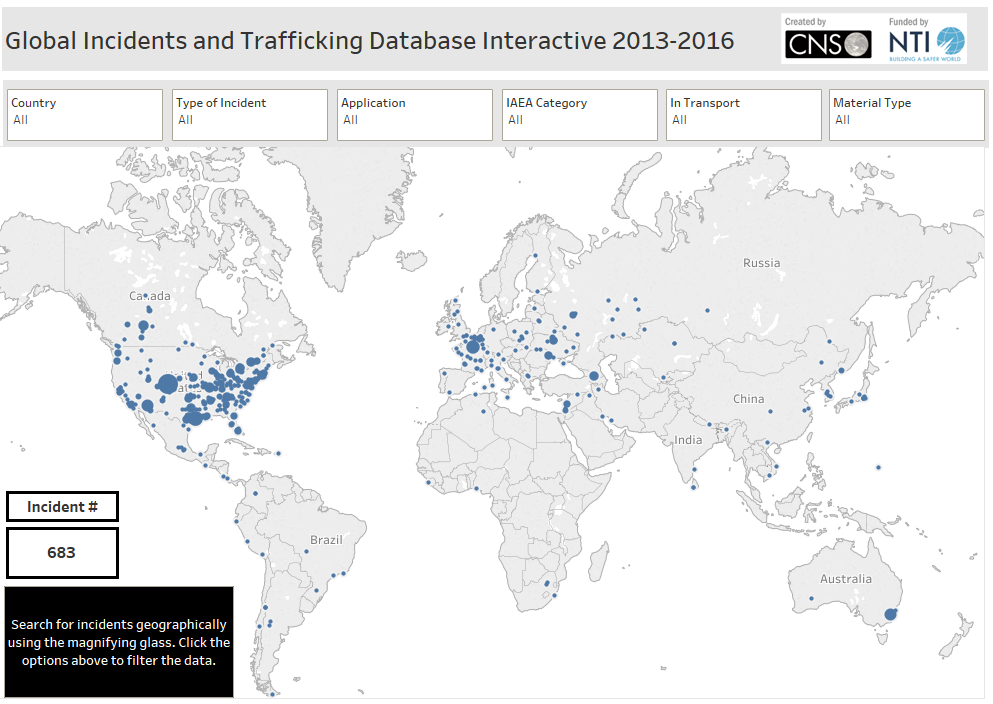
New Analysis Illustrates Radiological Risks of Cesium-137 Blood Irradiators
CNS experts Ference Dalnoki-Veress and Miles Pomper use an interactive story map with the article to illustrate several global incidents involving cesium-137.
A new edition of an annual report on global trafficking incidents found an increase in the number of times where nuclear or radiological materials—the raw materials for nuclear and radiological terrorism—were lost, stolen or out of regulatory control between 2013 (155 incidents) and 2014 (170 incidents). The database and companion report were produced by the James Martin Center for Nonproliferation Studies (CNS) with support from NTI.
Few incidents involved material that was directly weapons-usable, but this does not necessarily indicate that weapons-usable materials are adequately secure. Most incidents were caused by careless, not criminal, individuals; and even among cases linked to criminal activity, many often involved the unintentional or opportunistic theft of radioactive material. “If petty criminals can exploit weak security controls or careless human behavior, then certainly an organized and determined terrorist group can as well,” notes the executive summary.
Incidents ranged from the arrest of an organized criminal network suspected of smuggling uranium in Moldova, where uranium and other radioactive materials were seized, with a value of 1.6 million Euros to a radiography camera lost at a California worksite to a theft in Vietnam of an iridium source.
The United States, Canada and France account for 70 percent of reported incidents, while some countries with large nuclear or radiological material holdings had very few incidents. This is likely due to the significant variations in regulatory capacity, reporting norms and culture of transparency.
Among other highlights in the analysis by CNS:
The report concludes by noting, “Varied reporting transparency continues to obscure the scale of the threat posed by illicit trafficking, while lapses in physical security and human error enable trafficking incidents to take place. Making progress on these three key fronts should be a top priority for governments seeking to reduce the risk of nuclear and radiological terrorism.”
The CNS Global Incidents and Trafficking Database is the only database on the subject that is both globally comprehensive and available to the public at no cost. As new data is added on an annual basis, the database can help highlight trends and assess the impact of new policies designed to reduce the nuclear security risks posed by trafficking.
For the full findings and recommendations, visit www.nti.org/trafficking to get the report or download the database.
Sign up for our newsletter to get the latest on nuclear and biological threats.
CNS experts Ference Dalnoki-Veress and Miles Pomper use an interactive story map with the article to illustrate several global incidents involving cesium-137.
A newly updated edition of the CNS Global Incidents and Trafficking Database finds 143 incidents involving nuclear and other radioactive materials in 19 countries during 2016.
“The bottom line is that the countries and areas with the greatest responsibility for protecting the world from a catastrophic act of nuclear terrorism are derelict in their duty,” the 2023 NTI Index reports.


